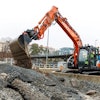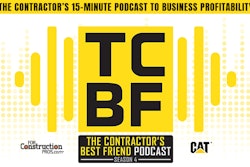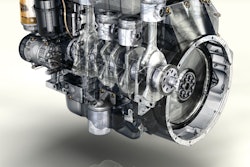At the turn of the new millennium, the construction equipment market appeared to be at a crossroads, as existing equipment technology reached a pinnacle and new technologies began to emerge. Nowhere is this more obvious than in the engine designs resulting from regulatory tiers put in place to control diesel emissions. With each tier, new and more highly engineered power sources have emerged, enabling equipment performance and functionality that some would have called unachievable a decade ago.
As engine designs continue to evolve, manufacturers are developing technology that will enhance efficiency even further and help to reduce operating and maintenance costs down the road. Take the recent advancements that have enabled several suppliers to proclaim diesel particulate filters, once the mainstay in exhaust aftertreatment, unnecessary to control emissions output. These manufacturers are utilizing a unique combination of technologies — such as extremely high-pressure common rail fuel injection systems, exhaust gas recirculation or selective catalytic reduction — to minimize the aftertreatment requirements of their engines, while maintaining peak performance levels, maximizing fuel efficiency and meeting or exceeding required emissions standards.
Looking even further into the future of equipment technology, several manufacturers have introduced hybrid power systems designed to propel their equipment into a new realm of fuel economy and operating performance. Production models of hybrid-powered machines first emerged in larger earthmovers — most notably the Cat D7E crawler tractor — and are now moving into more standard-size equipment common on a larger percentage of construction jobsites.
In particular, full-size excavators are emerging as the next springboard for hybrid power systems. The ability of hybrid systems to capture what was previously considered “wasted” energy during common functions such as carriage swing is nothing short of revolutionary for an industry not often viewed by outsiders as a technology leader. Such advancements are relegated to high-production machines at this time, but as with other advancements, are destined to migrate into more utility size machines as the industry and economics dictate.
Achievements seen over the past decade have propelled the construction industry to new heights in technological advancements and more is yet to come. In this issue, we’ve provided a glimpse into what the future may look like for your equipment in a special section entitled Powering the Future, which starts on page 10. In addition, throughout the year, we will be introducing you to cutting-edge advances in equipment design and breakthroughs in systems technology that could be the key to enhancing the performance and profitability of your equipment fleet far into the foreseeable future.
Clearly, what we’re seeing in terms of power system technology is only the tip of the iceberg. The industry is poised to see giant leaps forward, and we’ll be sure to keep you posted as these leaps occur.





















